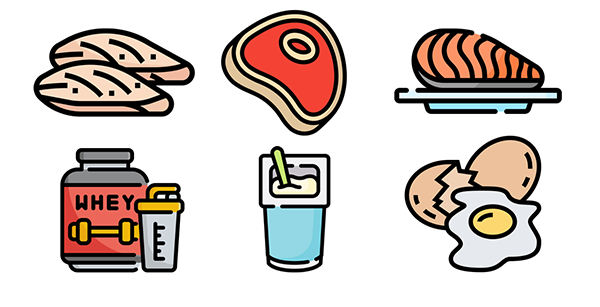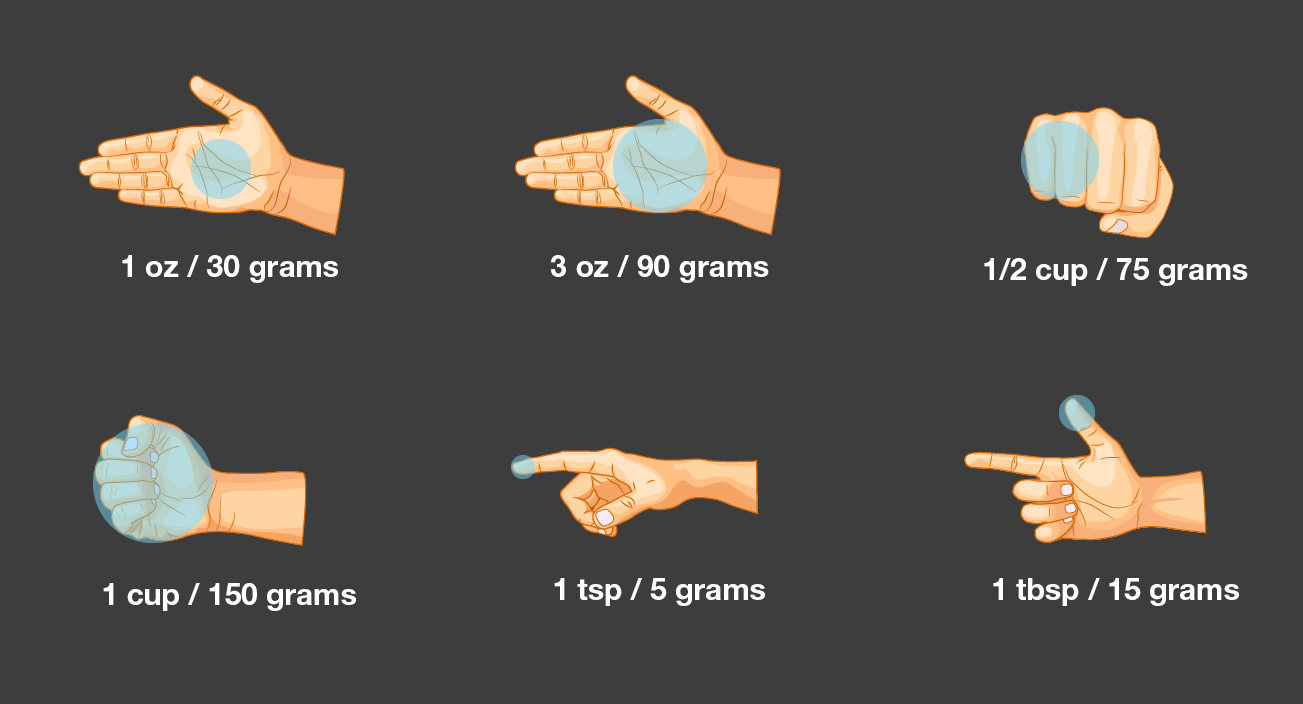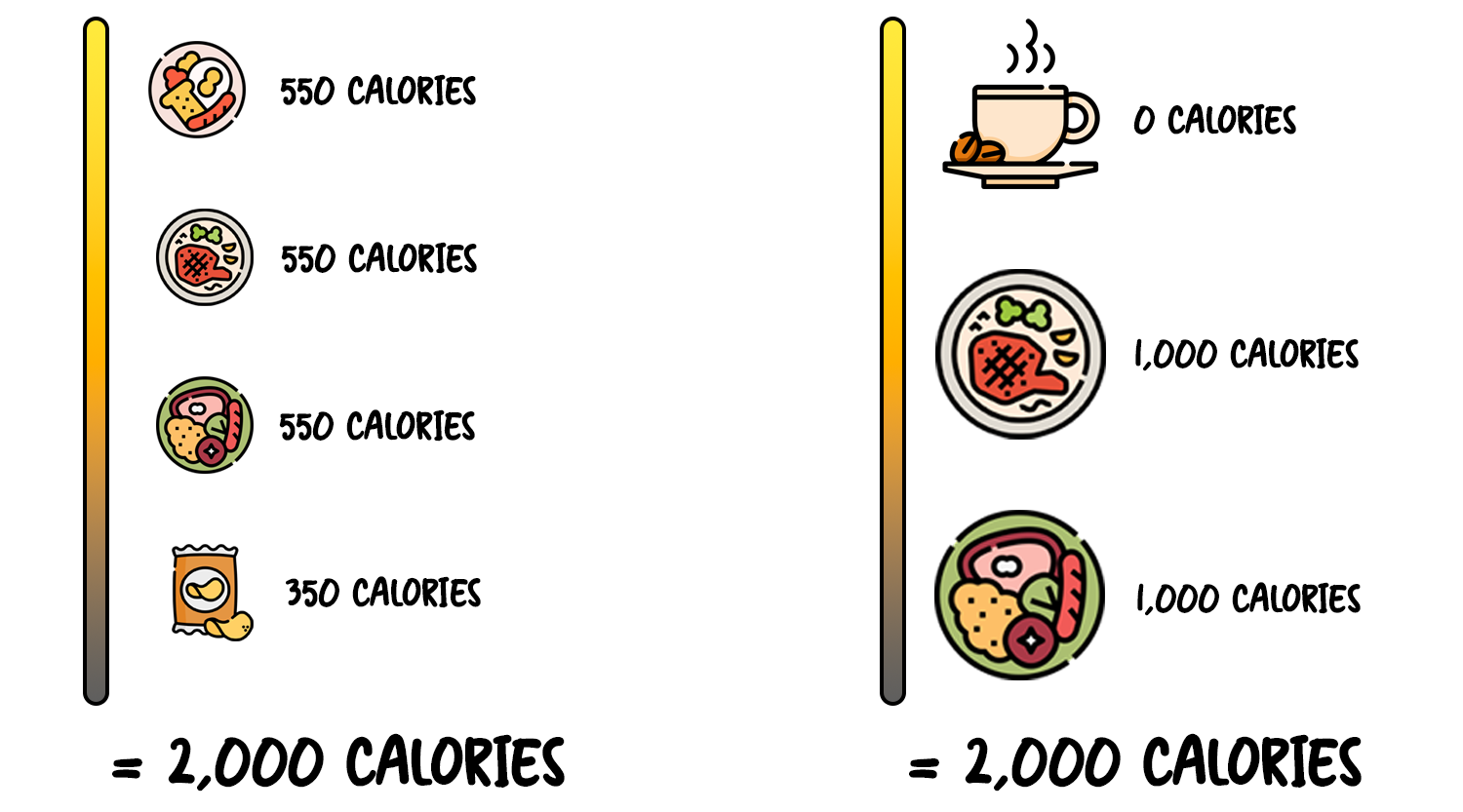The Nutrition Cheat Sheet

If you’re serious about transforming your physique as quickly as possible, then hitting the weights a few times per week is just part of the total equation.
As they say...
“Get fit in the gym, build abs in the kitchen.”
This nutrition guide will make it incredibly easy for you to setup a customized nutrition plan for you.
🏆 The nutritional order of importance
When it comes to setting up a fat loss diet, there’s an order of priority for each component of the diet.
Most people end up spinning their wheels or failing their diets because they’re prioritizing the wrong things with their diets.
So in this lesson, we’re going to expand on the above image and explain how to set up a diet that works for you.
🥇 The foundation: adherence and sustainability
Most people don’t have a fat loss problem — they have a sustainability problem.
The perfect diet is absolutely useless if you can’t sustain it long enough for it to work.
Anyone can go on a crash diet and lose weight, but end up gaining all the weight back (and then some) as soon as they go back to their old eating habits.
This is why it’s incredibly important to personalize your diet to make it work for YOU.
You do that by adjusting the individual components of your nutrition strategy — and that’s exactly what we’re going to do next.
🎯 Set Your Daily Calorie Target
This is THE key to successful fat loss.
It DOES NOT matter whether you’re doing:
- keto diet
- plant-based diet
- Paleo diet
- carnivore diet
- "clean eating"
Or whatever the fuck Instagram influencers are pushing these days.
Truth?
Every single diet will work IF you can burn more calories than you’re taking in (read the study here).
That's just basic thermodynamics.

Which multiplier you should use depends on a few factors:
- Shorter, sedentary people should use the lower end of the range (9 to 10 for females, 10 to 11 for males)
- Taller, more active people should use the higher end of the range (10 to 11 for females, 11 to 12 for males)
This should result in losing ~0.5% to 0.7% of your bodyweight per week on average.
This is a nice sweet spot for keeping your muscle during a fat loss diet (read the study here).
I also highly recommend giving yourself a 100-calorie buffer each way.
This means that if your target is 1600 calories per day, you can go up as high as 1700 calories or as low as 1500 calories.
Doing this will give you some leeway. If you're not particularly hungry, you can aim for the lower end of the range. But if you want to eat more, you have some additional wiggle room.
This will also help you avoid getting neurotic about hitting you targets perfectly. As long as you stay between the two numbers, you’d still be on track with my diet.
🥩 Set Your Daily Protein Target
Protein are the building blocks of our body and is essential to muscle growth.

Protein plays a few key roles for our purposes:
- Muscle retention. When you’re in a calorie deficit, your body will use its energy stores for fuel. When you combine eating enough protein with strength training, this stops your body from burning muscle for energy.
- Muscle growth. Protein is what your body uses to synthesize new muscle tissue and repair the damage caused by training. Without enough protein, you won’t gain muscle and strength.
- Increases calories burned. Protein is metabolically expensive — meaning your body spends more energy digesting it. Because of this, you can enjoy a small boost in calories out with higher protein intakes.
This is the reason why you see tubs and tubs of protein powder when you walk into a supplement store, and why chicken breast is a staple for bodybuilders all over the world.
The problem?
A lot of people think they NEED more protein than they actually do.
As a result, far too many people end up struggling because they can’t hit their protein goals AND stay within their calorie targets at the same time.
But guess what?
You don’t actually need anything more than a gram of protein per pound of bodyweight per day (read the study here).
So if you weigh 180 lbs, you should aim for a minimum of 144 to 180 grams of protein per day.
(Clinically overweight people should use 0.7 to 0.8 as a multiplier, while the clinically obese should use 0.6 to 0.7 instead.)
If you’re finding it difficult to hit your daily minimums, consider supplementing with whey protein.
🍞🥜 Then we have carbs and fats
If protein is the building blocks of our body, then carbs are your body’s energy source.
Carbs have been made out to be a villain in the past few years, but they aren’t bad in and of themselves.
You can technically survive on zero carbs, but it’s MUCH EASIER for our bodies to break it down and convert it into usable energy versus fats and proteins.
Now:
If protein is the building block, and carbs give us energy, then fats are what we need for general health.
Fats help produce key hormones in our bodies and absorb vitamins.
Getting too little dietary fat can cause loss of sex drive, lowered testosterone, a weaker immune system, and other things we don’t want.
You might be wondering:
“But won’t eating carbs / fats make me fat?”
No, eating carbs and fats WILL NOT make you fat.
What makes you fat are the excess calories from too much carbs and fats.
As long as you’re:
a.) within your calorie limits, and
b.) are hitting your protein targets,
You can let your carbs and fats fall where they may based on your preferences.
🤳 Logging Your Calorie Intake
Ultimately, you want to make sure that you're consistently hitting your calorie targets on a daily basis.
Instead of relying on gut feel, logging our calorie intake into a tracker allows us to quantify how much we’re actually eating.
This should be quite easy. All you have to do is simply log everything you’re eating and drinking that has calories.
I recommend one of the following apps:
👉 MacroFactor (requires a subscription, but my personal favorite due to their database accuracy and bonus features)
👉 Lose It
👉 MyFitnessPal (arguably the most popular option on this list, but personally not recommended due to a really shitty database with a lot of inaccurate entries)
Use a food scale whenever possible. People are horrible at estimating portion sizes, so doing so will help you get the most accurate results.
That doesn't mean you have to bring a food scale with you if you're eating out. In case you don't have one around, you can use the following guide to estimate portion sizes:

If you're brand new to logging calories, don’t pay attention to your calorie targets just yet.
Simply make it a habit to log everything as accurately as possible.
🤔 What Should You Eat?
As a fitness coach, one of the most common questions I get asked about nutrition is, “Is XYZ food good for you?” or some other variation.
Repeat after me: THERE IS NO SUCH THING AS GOOD FOOD OR BAD FOOD.
Food is neutral — it can’t be good nor bad for you. Nobody woke up suddenly fat after eating ice cream the day before.
Instead of the good food vs. bad food paradigm, think of food as either bringing you closer or farther away from your goals.
Now:
While nothing on this diet is off-limits, you'll find it much easier to stick to your calorie targets by setting a few rules:
- Substitute highly-processed food for minimally-processed whole foods (baked chicken breasts instead chicken nuggets)
- Eat more fruits and vegetables for better satiety (ex. add 2 cups of vegetables to every meal)
- Reduce/eliminate liquid calories (ex. drink Coke Zero Sugar instead of a large Coke)
- Control your portions (ex. ordering small fries instead of large)
- Eat larger but fewer meals (ex. eating only 2 regular sized meals a day instead of 3)
With that said, a good rule of thumb is that roughly 80% of what you eat should come from this list:

🕖 When Should You Eat?
You can eat as many times as you want per day, at whatever time is convenient for you.
But since we're trying to achieve a calorie deficit, you might find it a lot easier to hit your calorie targets by eating fewer, but larger, meals throughout the day.
Some people will call this intermittent fasting with a 16:8 window.
Me?
I just call it “skipping breakfast.”
This is what I personally do:

Now, just to be clear:
Intermittent fasting is NOT necessary to lose weight.
Hell, you can eat 10 meals per day if you wanted to.
If you’re taking in less calories than your body is burning, you WILL lose weight.
What intermittent fasting does is make it MUCH EASIER to follow my calorie targets for the day.
Each meal is larger, so there’s less temptation to snack on something throughout the day.
I’d still be full from the last time I ate, so eating would be the last thing on my mind.
